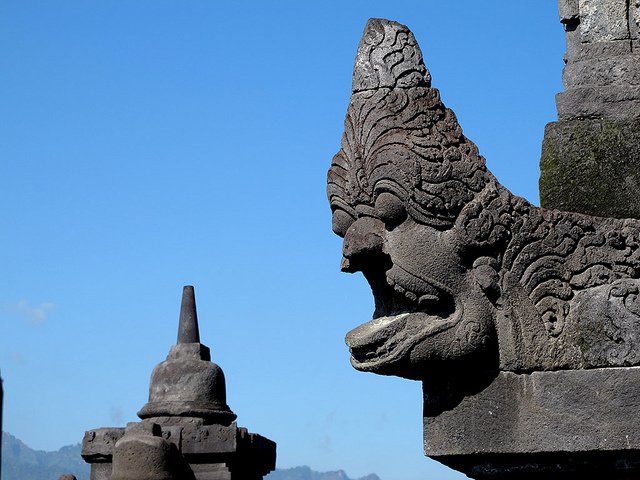
Borobudur Temple is a massive Buddhist temple in Java, Indonesia. Built in the ninth century, Borobudur has a complex, tiered design and is richly decorated with hundreds of Buddha statues and thousands of relief-carved scenes depicting important Buddhist stories. It also has stupas and other sculpted imagery including gargoyles.

Finding gargoyles, particularly functional gargoyles as these seem to be (rather than purely-decorative grotesques), on buildings with no religious, cultural, or geographic ties to any of the other gargoyles I’ve featured before excites me. The fact that many different artistic traditions independently felt the need to place real or imagined animals on their drain spouts seems to mean that there’s a larger significance to the existence of gargoyles than can be explained by any single culture’s interpretation of them.
Borobudur is a UNESCO World Heritage Site.


